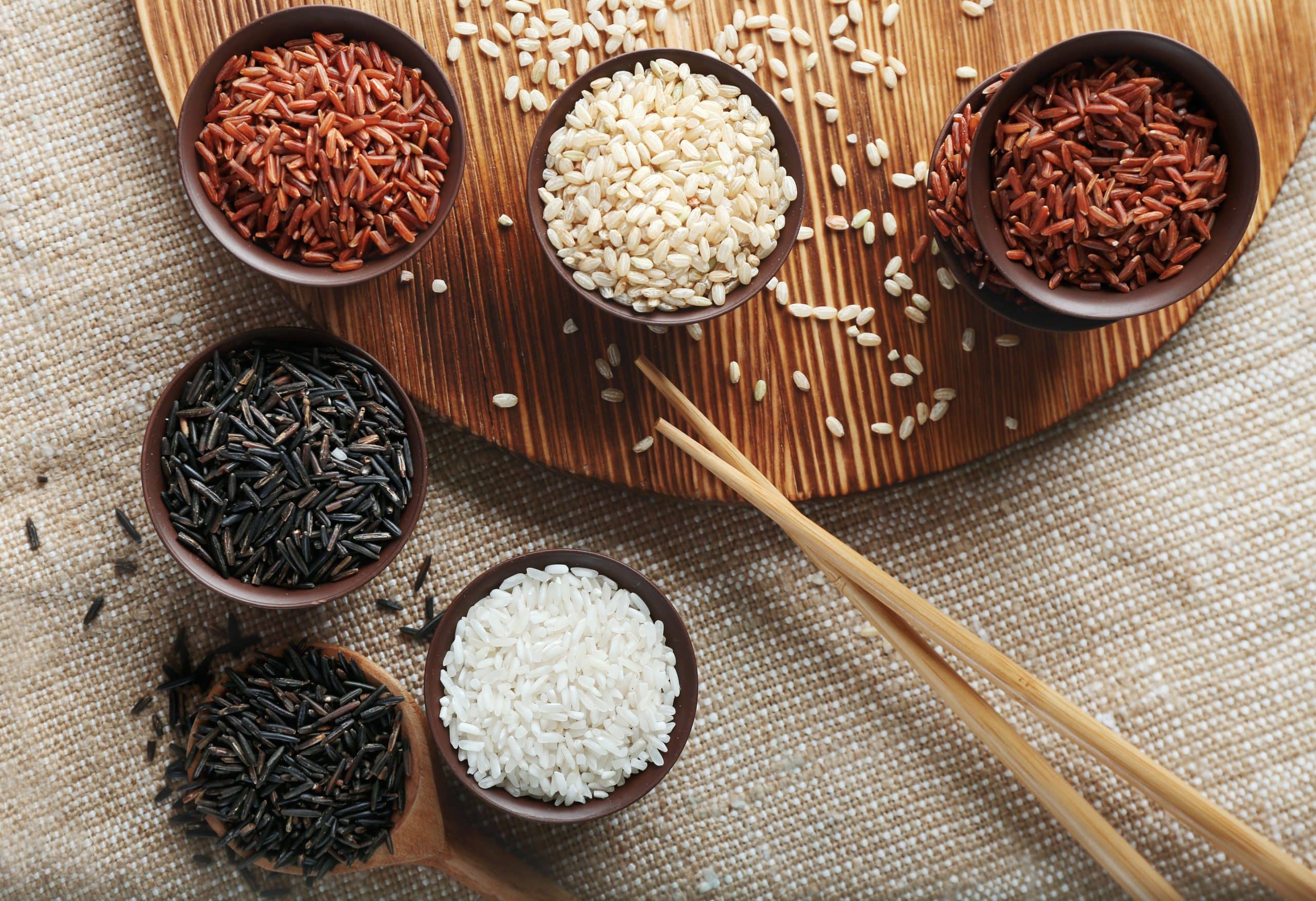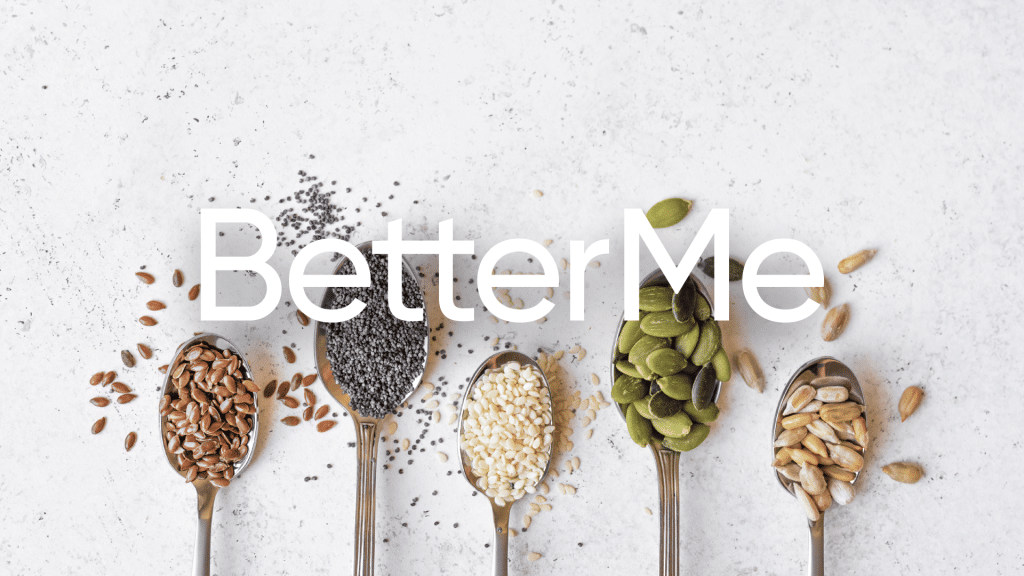If all that comes to mind when you hear “rice” are the white or brown varieties, then you’ll be surprised to find out just how diverse this grain is. For the purposes of this article, rice refers to the seed of the grass species Oryza sativa (Asian rice) or less commonly Oryza glaberrima (African rice).
As a staple food for over half the world’s population, rice is more than just a side dish—it’s a culinary cornerstone with deep cultural significance. Each type of rice has its own unique taste, texture, and culinary use, leading to an array of dishes that highlight the versatility of this humble grain.
From the fragrant basmati and jasmine varieties to the starchy arborio and the nutty red and black rice, the world of rice is a vast landscape of delicious diversity.
How Many Types of Rice Are There?
There is a staggering diversity in the world of rice, with more than 120,000 different strains recognized globally. These varieties can be broadly classified into three categories based on grain size: long, medium, and short. However, this only scratches the surface of the variety available.
From differences in color, texture, aroma, and taste to adaptations for specific climates and terrains, each type of rice has unique characteristics making it suitable for a range of dishes and cuisines. It’s also worth noting that certain regions, such as in India are known for their vast numbers of varieties, with possibly up to 82,700 distinct types of rice.
BetterMe app will provide you with a host of fat-frying fitness routines that’ll scare the extra pounds away and turn your body into a masterpiece! Get your life moving in the right direction with BetterMe!
What Are The 4 Main Types of Rice?
While there are numerous varieties of rice, if we were to simplify and categorize them into four main types for a broad understanding, these would be: white rice, brown rice, wild rice, and specialty rice.
White rice is the most commonly consumed type globally, known for its versatility and mild flavor. It’s milled and polished, minus the husk, bran layer, and germ.
Brown rice is a whole grain, meaning only the outer hull is removed. It’s more nutritious than white rice because it retains its fiber, and has a slightly nutty flavor.
Wild rice isn’t technically rice but a different species of grain entirely. It’s native to North America, has a robust, somewhat earthy flavor, and is rich in protein and fiber.
Specialty rice encompasses a wide range of varieties including basmati, jasmine, black rice, and more. These types are often associated with specific cuisines or regions and have unique flavors, aromas, and textures.
Remember, this is a simplified classification and there are many more subtypes and varieties within these categories, each with its own unique characteristics and culinary applications.
Read more: Is Rice Fattening: Examining the Myths, Misconceptions and Nutrition Facts.
List of Common Types of Rice
Arborio Rice
A type of short-grain rice used primarily in Italian dishes, especially risotto. It’s known for its high starch content which gives dishes a creamy texture.
Basmati Rice
A long-grain rice native to India and Pakistan. It’s known for its fragrant aroma and is often used in biryani and pilaf recipes.
Black Rice
Also known as ‘forbidden rice’, it may be one of the healthiest types of rice due to its high antioxidant content. It has a nutty flavor and is often used in salads and desserts.
Bomba Rice
A short-grain rice from Spain, it’s the preferred choice for making paella due to its ability to absorb large amounts of broth while remaining firm.
Brown Rice
A whole grain rice that retains its bran layer, making it more nutritious and considered a healthy rice option. It’s used in a wide variety of dishes due to its slightly nutty flavor. Many of the specialty varieties come in both white and brown versions.
Calrose Rice
This medium-grain rice originated in California (hence the name). It’s used in a variety of dishes and is particularly popular in the western United States and parts of Asia.
Carnaroli Rice
A type of medium-grain rice best known for its use in risotto. It’s similar to Arborio but is considered superior due to its firmer texture and better absorption properties.
Glutinous Rice
Despite the name, this type of rice doesn’t contain gluten. It’s also known as sticky rice and is commonly used in Asian desserts and snacks.
Jasmine Rice
A type of long-grain rice with a floral aroma, commonly used in Thai and other Southeast Asian cuisines. It has a soft, sticky texture when cooked.
Medium Grain Rice
This rice has a size between long-grain and short-grain rice. It’s slightly chewy and more tender than long-grain rice, commonly used in dishes like paella.
Parboiled Rice
Although not a rice variety but a product also known as converted rice, it has undergone a steaming process before milling. This process makes it quicker to cook. .
Red Rice
A type of rice with a reddish hull, known for its nutty flavor. It’s often used in salads and side dishes and is considered a healthier rice due to its high fiber content.
Short Grain Rice
This rice has a short, almost round shape, and becomes very sticky when cooked, making it perfect for sushi and other Asian dishes.
Vialone Nano Rice
An Italian medium-grain rice, it’s one of the finest varieties used in making risotto, prized for its ability to absorb flavors without becoming too soft.
Wehani Rice
A type of brown rice with a reddish color and a flavor reminiscent of basmati. It was developed in the United States and is often used in pilafs and salads.
Wild Rice
Although not technically rice but a type of grass, wild rice is often included in rice dishes. It’s one of the healthiest types of ‘rice’, high in protein and fiber.
White Rice
The name of rice with only the endosperm remaining, is the most common type of rice worldwide, it’s versatile and used in countless types of rice dishes and recipes, from stir-fries to desserts. Many varieties of rice come in both white and brown versions.
Which Type of Rice Is Good For Health?
Brown rice is often considered the healthiest type of rice due to its high fiber content and nutrient density. It’s a whole grain, meaning it contains all parts of the grain — including the fibrous bran, the nutritious germ, and the carb-rich endosperm (2).
Black rice, also known as forbidden rice, also ranks high on the health scale. It has a higher fiber content than white rice and includes generous amounts of anthocyanins, a type of antioxidant that gives the rice its dark color (2).
Wild rice, although not technically a rice but a type of grass, is also a healthy choice. It’s rich in protein, fiber, and a range of essential minerals and B vitamins (1).
However, the healthiest type of rice for you may depend on your specific dietary needs and health goals.
Lean and toned up body isn’t just a far-fetched fantasy. Check out the BetterMe app and watch it propel your weight loss journey into high gear!
What Type Of Rice Is Best?
The “best” type of rice can vary greatly depending on the context. For example, if we’re talking about health, black rice often tops the list due to its high nutrient content, including antioxidants, fiber, and other essential nutrients. Brown rice also ranks high for health reasons because it’s a whole grain that retains its bran layer, providing more fiber and vitamins than white rice (3).
If you’re considering flavor and texture for specific dishes, then other types may be “best”. For instance, basmati is best for Indian dishes like biryani due to its fragrant aroma and long, fluffy grains.
Jasmine rice, with its fragrant scent and slightly sticky texture, is ideal for Thai cuisine. Arborio or Carnaroli rice are best for Italian risotto due to their high starch content that results in a creamy dish.
In terms of general culinary use, many people might argue that white rice is the “best” because of its versatility, mild flavor, and the fact that it’s widely accepted and used in numerous dishes worldwide. However, this is subjective and can vary based on personal preferences and dietary needs.
What Kind of Rice Do Asians Use?
The type of rice chosen in Asian cuisine often depends on the specific dish being prepared. Each type of rice imparts its own unique texture and flavor to the dish.
Jasmine Rice
This is a long-grain variety native to Thailand. It’s known for its fragrant aroma, slightly sweet flavor, and sticky texture when cooked. It’s commonly used in Thai dishes.
Basmati Rice
Predominantly used in Indian and Pakistani cuisines, Basmati is a long-grain rice known for its fragrant aroma and fluffy texture when cooked. It’s often used in biryani and pilaf.
Short-Grain Rice
In countries like Japan and Korea, short-grain rice is the norm. Japanese sushi rice, a type of short-grain rice, is known for its stickiness and is used in sushi and onigiri. Similarly, Koreans use a sticky short-grain rice for most meals.
Medium-Grain Rice
Used in China and other parts of Asia, this type of rice is slightly sticky and more tender than long-grain varieties. It’s often used in dishes like fried rice.
Glutinous Rice
Also known as sticky rice, this is used across many Asian countries for desserts and snacks. Despite the name, it doesn’t contain gluten.
Koshihikari Rice
This is a premium short-grain rice from Japan used in high-quality sushi and other Japanese dishes.
Indica Rice
This is a category of long-grain rice used in various Asian cuisines. Chinese restaurants often use a subtype of Indica rice.
Read more: Is White Rice Gluten-Free? Here Is What Experts Say
Frequently Asked Questions
What Types of Rice are Long Grain?
Long grain rice is known for its long, slender grains that stay fluffy and separate after cooking. Here are some common types of long-grain rice:
- Basmati Rice: Native to India and Pakistan, this rice is aromatic with a light nutty flavor.
- Jasmine Rice: This fragrant rice originates from Thailand and is slightly sticky when cooked.
- American Long Grain Rice: This is the most common type of rice used in the United States. It has a mild flavor and light, fluffy texture when cooked.
- Wild Rice: Technically a grass rather than a type of rice, wild rice has long, thin grains and a strong, nutty flavor.
How to Cook Different Types of Rice?
The method of cooking rice often depends on its type. Here’s a basic guide:
- White Rice: Rinse the rice under cold water until the water runs clear. Combine 1 cup of rice with 2 cups of water in a saucepan. Bring to a boil, then reduce heat, cover, and simmer for about 15-20 minutes.
- Brown Rice: Rinse and drain the rice. Combine 1 cup of rice with 2.5 cups of water. Bring to a boil, then reduce heat, cover, and simmer for about 45-50 minutes.
- Basmati and Jasmine Rice: Rinse until water runs clear. Combine 1 cup of rice with 1.5 cups of water. Bring to a boil, then reduce heat, cover, and simmer for about 15-20 minutes.
- Wild Rice: Rinse the rice. Combine 1 cup of rice with 3 cups of water. Bring to a boil, then reduce heat, cover, and simmer for about 45-55 minutes.
Remember, these are general guidelines and actual cooking times may vary depending on specific brands or varieties of rice.
Which Types of Rice are Glutinous?
Glutinous rice, also known as sticky rice, is a type of rice that becomes very sticky when cooked. Despite its name, it does not contain gluten. The main types include:
- White Glutinous Rice: This is the most common type of sticky rice and is often used in Asian desserts and dishes like mochi and mango sticky rice.
- Black Glutinous Rice: Also known as black sticky rice, it’s used in a variety of Asian desserts.
- Glutinous Short-Grain Rice: This rice is commonly used in Japanese cuisine, particularly for dishes like sushi.
How Many Types of Basmati Rice are There?
There are two main types of Basmati rice:
- White Basmati Rice: This is the most common type of Basmati, known for its fragrant aroma and fluffy texture when cooked.
- Brown Basmati Rice: This is a whole grain version of Basmati rice. It has a nuttier flavor and chewier texture compared to white Basmati rice.
In addition to these, there are various brands and grades of Basmati rice available, each with its own unique qualities. Some popular varieties include ‘Dehraduni Basmati’, ‘Taraori Basmati’, and ‘Pusa Basmati’.
The Bottom Line
Each type of rice brings a unique taste, texture, and aroma to the table. Whether it’s the aromatic basmati, sticky Jasmine, hearty brown, or fluffy white rice, the diversity in rice types is a testament to its global popularity. Understanding these varieties can elevate your culinary game, helping you choose the right grain for every dish.
Get your personalized
meal plan!
DISCLAIMER:
This article is intended for general informational purposes only and does not serve to address individual circumstances. It is not a substitute for professional advice or help and should not be relied on for making any kind of decision-making. Any action taken as a direct or indirect result of the information in this article is entirely at your own risk and is your sole responsibility.
BetterMe, its content staff, and its medical advisors accept no responsibility for inaccuracies, errors, misstatements, inconsistencies, or omissions and specifically disclaim any liability, loss or risk, personal, professional or otherwise, which may be incurred as a consequence, directly or indirectly, of the use and/or application of any content.
You should always seek the advice of your physician or other qualified health provider with any questions you may have regarding a medical condition or your specific situation. Never disregard professional medical advice or delay seeking it because of BetterMe content. If you suspect or think you may have a medical emergency, call your doctor.
SOURCES:
-
- Nutritional constituents and health benefits of wild rice (Zizania spp.) (2014,nih.gov)
- Rice (n,d,harvard.edu)
- What makes brown rice so beneficial to our health? (2023,openaccessgovernment.org)











